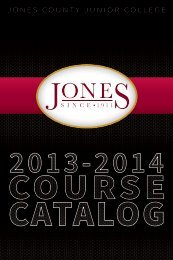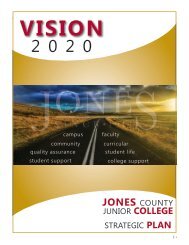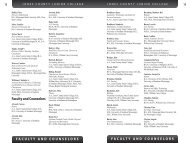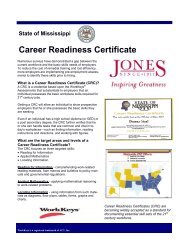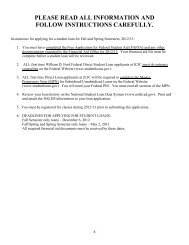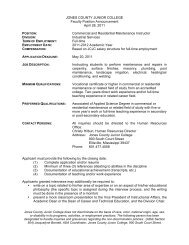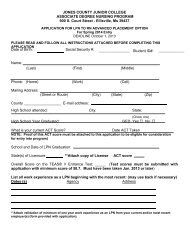SCRMC Patient Safety Module
SCRMC Patient Safety Module
SCRMC Patient Safety Module
Create successful ePaper yourself
Turn your PDF publications into a flip-book with our unique Google optimized e-Paper software.
Transmission-based precautions are aimed at containing and preventing the<br />
spread of infectious organisms from patient to staff to another patient. These<br />
precautions are frequently referred to as types of “isolation.” In order for<br />
transmission to occur, the organism from one infectious source enters a<br />
“host” (healthcare worker) and the “host” transmits the infection to another<br />
patient. Transmission may occur from direct contact with the patient or<br />
source of infection, i.e., wound, or from contact with an inanimate object in<br />
the patient’s room, i.e., siderail. Regardless of the source of infection, the<br />
chain of transmission MUST be broken for the welfare of patients and staff<br />
alike.<br />
<strong>SCRMC</strong> has 3 types of transmission-based precautions: Contact, Droplet,<br />
and Airborne. For each of these, a door sign would be used stating “STOP -<br />
check with nurse before entering the room.” This alerts all who enter if<br />
specific actions must be taken prior to entering. This does not violate HIPPA<br />
because no confidential information is given. If an employee from another<br />
department, visitor, or family member wishes to enter the patient’s isolation<br />
room, he/she will need the same protection as the nursing staff. The nurse<br />
will be responsible for educating those who enter on the safety precautions to<br />
use.<br />
Contact Precautions<br />
Contact precautions are taken when the patient has an infection that may<br />
spread by touching the patient or touching things in the patient’s room. This<br />
would include MRSA (Methicillin Resistant Staph Aureus) in a wound, VRE<br />
(Vancomycin Resistant Enterococci) in urine or stool, HIV (Human<br />
Immunodificiency Virus) in blood or body fluids, or some other GI, GU, or<br />
skin infections. Gloves should always be worn as well as a gown if<br />
splattering or contamination is possible. Equipment for this isolated patient<br />
should be restricted to this patient only when possible. Central Supply will<br />
provide a stethoscope, blood pressure cuff, thermometer, and IV pump for<br />
this patient. Any other equipment that enters the patient’s room must be<br />
wiped down with an antimicrobial wipe and allowed to dry before being used<br />
on another patient, i.e., Accucheck monitor. After discharge, the reusable<br />
equipment is wiped down to remove gross contaminants then taken to Central<br />
10



